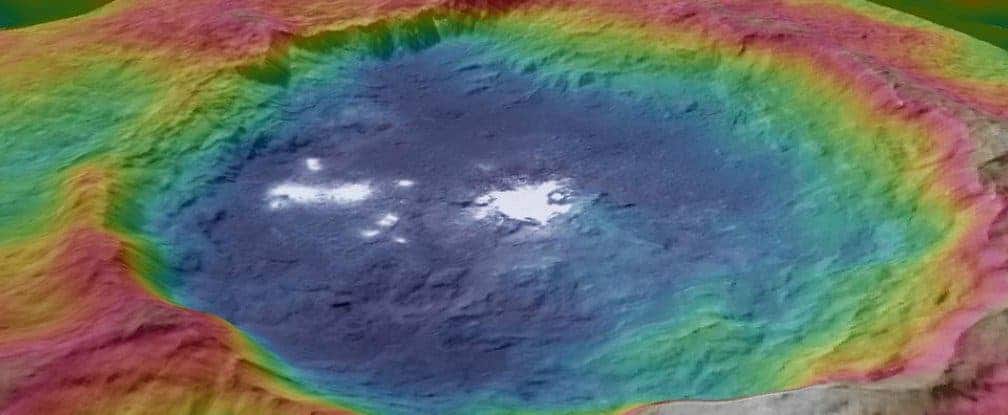A few days ago, we were telling you about some spectacular features on Ceres, the dwarf planet / largest object in the asteroid belt. NASA’s astronomers were puzzled by some white patches on Ceres’ surface, which they initially presumed to be ice. Now, they believe those patches are actually salt.

The Dawn Spacecraft, launched by NASA back in 2007, began photographing an extended disk of Ceres on December 1, 2014, taking photos of Ceres in 2015. At the European Planetary Science Congress in France, Dawn’s principal investigator Chris Russell told scientists that they now believe the patches are made of salt – it’s just not clear what kind of salt.
“We know it’s not ice and we’re pretty sure it’s salt, but we don’t know exactly what salt at the present time,” said Russell in his address, which has since been posted online.
If those patches were ice, then that would mean that Ceres would have more freshwater than even Earth, something which would have of course been interesting from the prospect of extraterrestrial life. Ice was the easy and obvious guess, but the data just didn’t fit. Ice is known to reflect nearly all of the light shone on it, whereas Ceres’ mysterious patches only seem to reflect around 40 percent, so that clearly doesn’t add up. Another option was some type of geyser or volcanic activity, but that has also been disproved.
The thing is, if those patches are salt, then we don’t know how we got there. Russell said that this might indicate that the surface of the planet is still active and the salts are “derived from the interior somehow”, and weren’t put there by an asteroid. If this is indeed the case, then Ceres just got a lot more interesting.






